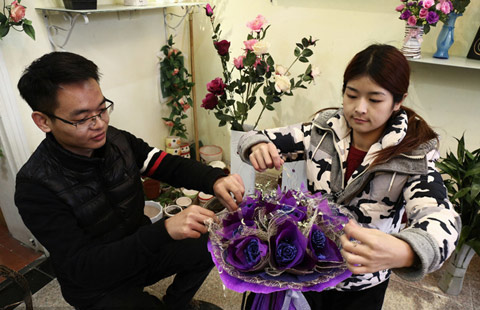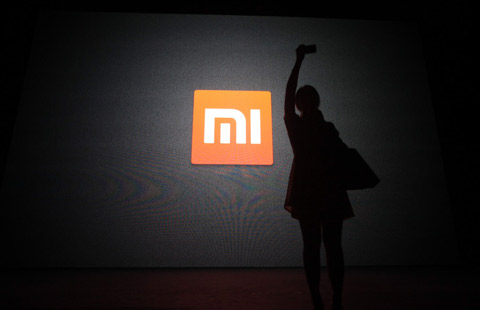Alipay bill brings memories and booming business
(Xinhua) Updated: 2014-12-10 10:13
 |
|
A receptionist works at Alipay's headquarters in Hangzhou, capital of East China's Zhejiang province, in this Jan 10, 2014 file photo. [Photo/Xinhua] |
HANGZHOU - Yvonne Fang could not believe her eyes when she saw a total transaction volume of 500,000 yuan ($81,000) on Alipay over the past 10 years.
"I hope my husband never sees the bill," she joked.
Alipay, an online payment platform launched by Alibaba in 2004, sent reports to its 300 million users on Monday detailing their spending over the past ten years.
The reports showed spending and investment through Alipay, together with an estimate of the users' assets in another 10 years judging from the spending and investment history.
Reviewing her spending since 2007, Fang, 30, found the first item she bought online was a blouse for only 69 yuan, one third of the tag price. "I even showed it off to my foreign colleague and recommended she turn to online shopping," recalled Fang, who now works at an international public relations company.
During her time spending online, she has grown from a fresh graduate into the mother of a two-year-old girl. The items she bought have also changed from clothes for her and her boyfriend, to furniture for their home, to baby things. "How time flies," she said.
The record not only brought a lot of memories, but exposed just how big the e-payment business has become in China.
According to the overall report, also released on Monday, the number of Alipay transactions reached 42.3 billion, with Guangdong, Zhejiang, Shanghai, Beijing and Jiangsu the top five regions.
Apart from online shopping, the report also included payments for mobiles, electricity and gas, credit card payments and fund transfers; services that Alipay offers free of charge.
Mobile payments accounted for over 50 percent of total online payments in 2014. The less developed regions in the west grew much faster than the developed east.
The regions with the highest percentage of mobile payments in 2014 were autonomous regions of Tibet - where mobile payments were almost 63 of the total - Ningxia and Inner Mongolia, and Shaanxi province.
Chen Jin, director of the research center of modern services with the University of International Business and Economics, said mobile payments in sparsely populated western regions with poor transportation, have grown rapidly in recent years because of the popularity of smartphones and mobile Internet.
- Cash crunch fans expectation on RRR cut
- US extends antidumping duties on China's thermal paper
- Modern food van with ancient look in Shanghai
- China home prices continue to cool in November
- Asia's top 3 billionaires all Chinese
- Old investment remedy the treatment for China's "new normal"
- China's solar sector opposes US anti-dumping ruling
- BMW to recall 846 cars in China
















